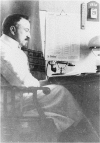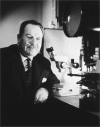Historical milestones in renal pathology
- PMID: 22661128
- PMCID: PMC3400763
- DOI: 10.1007/s00428-012-1254-7
Historical milestones in renal pathology
Figures









References
-
- Malpighi M (1666) De Viscerum Structura execitatio anatomica. Bologna
-
- Morgagni GB (1761) De Sedibus et causis morborum per anatomem indagatis. Venice
-
- Bowman W. On the structure and use of the Malpighian bodies of the kidney, with observations on the circulation through that gland. Philos Trans R Soc. 1842;132:57–80. doi: 10.1098/rstl.1842.0005. - DOI
Publication types
MeSH terms
LinkOut - more resources
Full Text Sources
Medical

